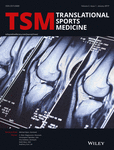Epidemiology of injury in sprint-distance adventure racing
Abstract
Introduction
Sprint-distance adventure racing is a multisport activity that has seen exponential growth over the past decade. Despite this, there is no published descriptive epidemiology of injury data available. Our research aims to describe the demographics, anthropometrics, and epidemiology of injury of this athletic cohort.
Methods
This study describes the findings of 257 completed athlete profiles. The study retrospectively details training habits, competitive history, injury records, and injury rates, occurring both in and out of competition during one complete season.
Results
Of the entire group, 59.9% reported injury. Injury incidence was 0.92 injuries per athlete. Injury rate was 2.75 injuries per 1000 hours of training while race injury rate was 23 injuries per 1000 hours of competition. About 70% of injuries occurred during training. 74% of injuries affected the lower limb. About 58.6% of all injuries were chronic in nature.
Conclusion
Injury rates are high in sprint-distance adventure racing. The injuries sustained occur in a predictable fashion and are associated with significant disability. The lower limb accounts for the majority of reported injuries. Injury is itself an independent risk factor for subsequent musculoskeletal insult in beginner and intermediate level athletes. Injuries occur more frequently in competition than during training. Larger prospective studies are needed to explore these findings in greater detail.
CONFLICT OF INTEREST
Nothing to declare.




